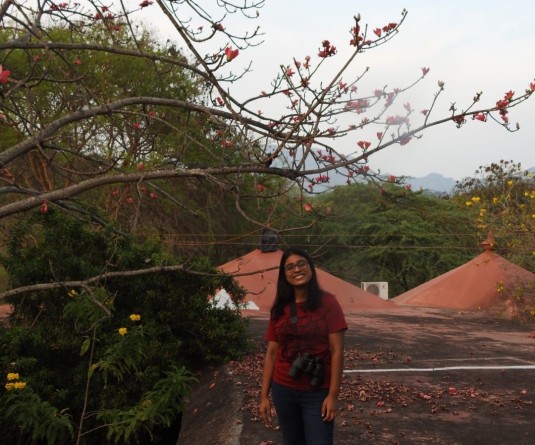
Tuisem A Shishak
Fellow Nagas, just think how long the Naga political movement has lasted. Some may say since the Naga Club was formed in 1918, 102 years ago. Or perhaps since the Naga Club submitted a Memorandum to the Simon Commission in 1929, 91 years ago. In that Memorandum, I found a profound political expression signed by 20 Nagas from six tribes on behalf of all the Nagas in Indo-Myanmar. I also found that one of the 20 signatories was a First World War Labor Corps returnee. My own father was also a Labor Corps returnee. I believe many Naga Labor Corps members from Manipur got acquainted with fellow Nagas of the then Naga Hills (now Nagaland State) in Europe for the first time, thereby enlarging their vision of future relationship together as fellow Nagas. If so, then the Naga political movement is 91 years old. Others will date it to 1946, when the Naga National Council (NNC) was formed, or the following year, when the NNC declared August 14 Naga Independence Day. If we accept this, then the Naga struggle is 74 years old. Still others may place the Naga struggle for political freedom in the 1950s when the first Indian Prime Minister, Jawaharlal Nehru, sent the Indian Army to Naga territory, forcing Naga freedom fighters into the jungles. If this is the case, then the Movement is 66 years old.
Let me take 1946, the year NCC was formed, as the genesis of the Naga struggle for political freedom. 74 years (let alone 91) is a long time. All those brave 20 Nagas who signed the Memorandum to the Simon Commission in 1929 are no more. I believe all those who formed the NCC are gone too. Under Angami Zapu Phizo’s leadership as President of NNC, the Naga political movement became internationalized. “Uncle” Phizo came to Ukhrul in 1948 during the Manipur Baptist Christian Golden Jubilee, partly to share his vision for the Naga independence movement. He came back to Ukhrul again in early 1950s to urge Tangkhul leaders to join the Naga political movement; he also visited other parts of Manipur for the same purpose. During his visit to the US in the early 1960s, Phizo told me that his vision for Naga freedom was inclusive of all the Naga tribes in the Indo-Burma Region. With that vision in focus, Phizo and his colleagues struggled to the end.
From the very beginning, our Naga forefathers were of one mind concerning the absolute necessity of bringing together all the contiguous Naga areas in Indo-Myanmar to form one independent Naga nation. This was in evidence when they negotiated the Nine-Point Agreement (or Naga-Akbar Hydari Accord) in 1947. Ten Naga tribes were represented at the signing.
“Point 6. Boundaries – That present administrative divisions should be modified so as . . .(2) to bring under one unified administrative unit as far as possible all Nagas. All the areas so included would be within the scope of the present proposed agreement.”
The Naga People’s Convention also believed in integration, as evidenced by their 16-PointAgreement with the Government of India in1960:
“13. Consolidation of Contiguous Naga Areas: . . . other Nagas inhabiting contiguous areas should be enabled to join the new state.”
Since then, Nagaland State Assembly has passed six resolutions on the integration of contiguous Naga inhabited areas under one administrative umbrella, on December 12, 1964; August 28, 1970; September 16, 1994; December 18, 2003; July 27, 2015; and September 21, 2018. For over 70 years, Naga national leaders were of one mind on Naga sovereignty and integration of all the contiguous Naga territories in Indo-Burma (now Myanmar) as two non-negotiable ingredients of the Naga political movement. In the early 1960s, then Prime Minister Indira Gandhi was said to have told some Naga national leaders that she was willing to do anything for the Nagas short of full sovereignty. Phizo wanted nothing short of full sovereignty for all the Nagas. And he spent his life proclaiming openly before the world that Naga sovereignty was their God-given right.
In recent times, several Naga national leaders, ‘over-ground’ politicians, and other public figures began to lose hope for Naga sovereignty. Some are now saying even integration of the contiguous Naga areas of Indo-Myanmar will have to wait for future solution. They still seem to be talking about a “piece-meal solution,” but ironically are now even demanding a quick and final solution based on whatever they had agreed to as of October 31, 2019. Or maybe a final solution based on whatever the Government of India had forced Naga leaders to agree to by October 31. But what kind of final solution are both the NSCN-IM and the WC-NNPG talking about by excluding Naga territorial integration for the time being? Naga national leaders have always claimed that Naga-Land was never a part of India. That’s why the Naga Memorandum to the Simon Commission asked the British Government that upon their departure from India the Nagas must be left alone just as they were before. Have the Nagas suddenly become beggars, requesting the Modi Government to do something special for them? What happened to our inherent birthright to be free people, living together under one political umbrella by consolidating all contiguous Naga areas in Indo-Myanmar? It looks like we first sold our birthright “Naga Sovereignty,” and now we are selling “physical integration of all contiguous Naga territories.” Now what is left worth fighting for? Nagas are now beginning to sound like Esau selling his birthright in exchange for a plate of food.
On the issue of Naga integration, every Naga has the right to express his/her mind. The possibility that following a painful, tearful, and bloody Naga political struggle our current Naga national leaders may just go ahead and sign the Accord with India for final Naga political solution without achieving even integration of all contiguous Naga areas, let alone Naga sovereignty, is frightening. It might as well be called “Unfinished Naga Political Accord,” forcibly imposed by the Central Government in Delhi.
When Nagas talk about integration, they only mean reuniting the contiguous territories of all the Naga tribes in Indo-Myanmar region which were unilaterally divided into five units by the dominant cultures (British, Burmese, and Indian) and placed within four Indian states and Myanmar. Apart from Eastern Naga territory now controlled by Myanmar, what is the rationale for the Indian Government’s refusal to let all the Nagas live together under one political umbrella?
Article 2 of the Constitution of India empowers Parliament to admit into the Union, or establish, new States on such terms and conditions as it thinks fit. Article 3 permits Parliament to form a new State from the territory of another State or by uniting two or more States, increasing or decreasing the area of any State, or altering the boundaries or the name of any State.
Examples: 1) Chhattisgarh State was formed in 2000 by partitioning ten southeastern districts of Madhya Pradesh. 2) Jharkhand State was formed in 2000 out of the southern portion of Bihar, following a long struggle by the Adivasis, or Scheduled Tribes. 3) Uttarakhand State was carved out of Uttar Pradesh.
Existing Indian law thus permits the creation of a new Naga-Land state consisting of contiguous Naga home territories presently in Assam, Arunachal Pradesh, Manipur, and the existing state of Nagaland. Why shouldn’t our brothers and sisters in North East India be willing to part with territories belonging to and exclusively occupied by Nagas as their ancestral home? Yet there are Naga leaders today talking about Pan-Naga Hoho in lieu of physical integration. We can agree to disagree in a democracy, but to me, Pan-Naga Hoho sounds like integrating Nagas with a remote control. This is the last thing Nagas need. I am sure, for the vast majority of Nagas, “Integration” means nothing short of physical (geographical) integration. And the time to negotiate for physical integration of all contiguous Naga territories mentioned above is ‘Today, Not Tomorrow’. We cannot say, “Sign Final Solution Now,” and then pursue, post-final solution, one non-negotiable Naga demand which is ‘Physical Integration of Contiguous Territories of All the Naga Tribes in Indo-Myanmar.’ There are other Nagas who condemned the formation of Nagaland State in 1963 and are now talking about keeping as it is, as if enlargement of the state territory is to their disadvantage. This sounds like dirty politics based on narrow tribal mentality. I would hope that all thinking Nagas would welcome with open arms the formation of a Naga Homeland comprising the combined total Naga areas in Indo-Myanmar estimated by some as much as 120,000 sq.km.
I appeal to all Naga national leaders, current Naga ‘over-ground’ politicians, bureaucrats, professionals, and Christian leaders to search their hearts and minds with God’s Holy Spirit to make sure that this time what God really wants the Nagas to have will be included in the Final Accord. I also make a special appeal to Naga high school, college and university students, and professors to seriously ponder over all the options and take a stand Now! My generation is supposed to be preparing for your future. Realize what future you might be facing if another piecemeal accord is signed. This time, Don’t allow your elders to sell your future for money and power. Uncle Phizo absolutely refused to be purchased by money and power.
Beware of deception everywhere. The Government wants Naga disintegration; the so-called Pan-Naga Hoho is no substitute for physical integration. Will Prime Minister Modi and his government do better and deliver what they promised?
Surely Nagas desire total physical integration. But unless and until the NSCN-IM and the WC-NNPG sit down together and with one mind agree on the core demands to be included in the final accord, it will again be just another open-ended agreement. If that happens, I deeply fear another Naga group may arise to continue the struggle, resulting in much worse than we have ever seen. God forbid! Surely, if Nagas truly believe in “Nagaland For Christ” this time Let Jesus Christ, The Prince Of Peace lead in the signing of the Final Accord with India.“ Not by might nor by power, but by my Spirit,’ says the Lord Almighty” (The Bible). Amen!





